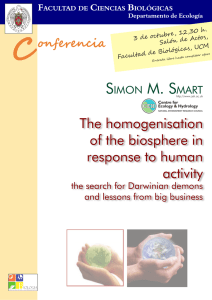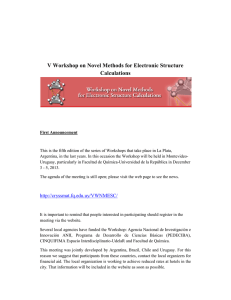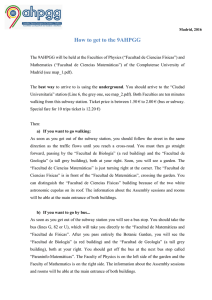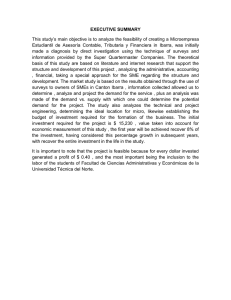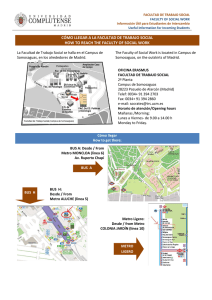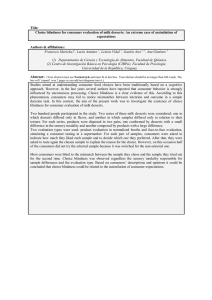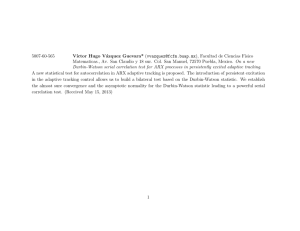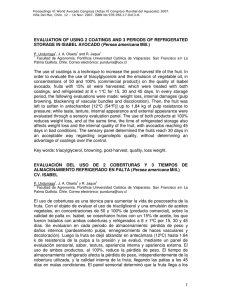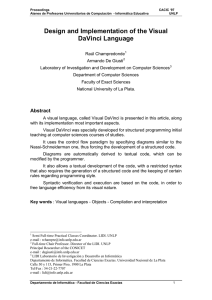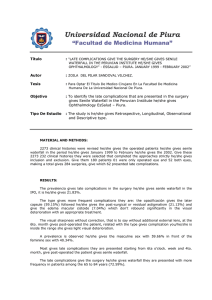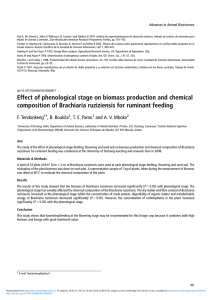Geophysical Methods for Environmental Decontamination
Anuncio
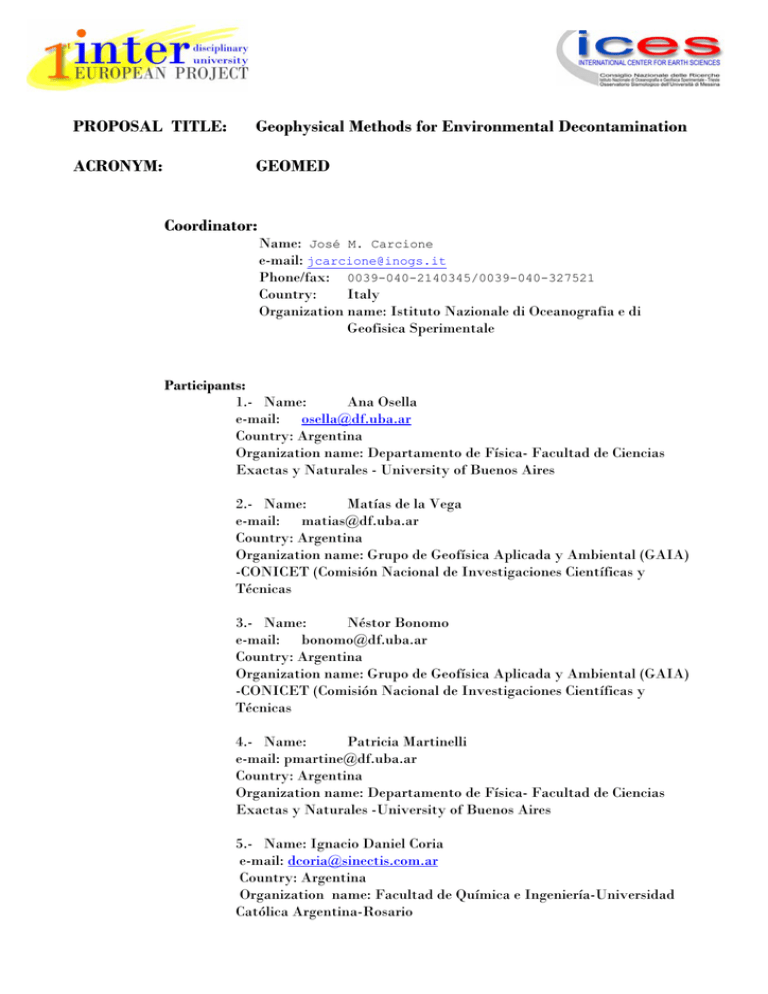
PROPOSAL TITLE: Geophysical Methods for Environmental Decontamination ACRONYM: GEOMED Coordinator: Name: José M. Carcione e-mail: [email protected] Phone/fax: 0039-040-2140345/0039-040-327521 Country: Italy Organization name: Istituto Nazionale di Oceanografia e di Geofisica Sperimentale Participants: 1.- Name: Ana Osella e-mail: [email protected] Country: Argentina Organization name: Departamento de Física- Facultad de Ciencias Exactas y Naturales - University of Buenos Aires 2.- Name: Matías de la Vega e-mail: [email protected] Country: Argentina Organization name: Grupo de Geofísica Aplicada y Ambiental (GAIA) -CONICET (Comisión Nacional de Investigaciones Científicas y Técnicas 3.- Name: Néstor Bonomo e-mail: [email protected] Country: Argentina Organization name: Grupo de Geofísica Aplicada y Ambiental (GAIA) -CONICET (Comisión Nacional de Investigaciones Científicas y Técnicas 4.- Name: Patricia Martinelli e-mail: [email protected] Country: Argentina Organization name: Departamento de Física- Facultad de Ciencias Exactas y Naturales -University of Buenos Aires 5.- Name: Ignacio Daniel Coria e-mail: [email protected] Country: Argentina Organization name: Facultad de Química e Ingeniería-Universidad Católica Argentina-Rosario 6. Name: Davide Gei e-mail: [email protected] Country: Italy Organization name: Istituto Nazionale di Oceanografia e di Geofisica Sperimentale 7. Dra. María Teresa Garea e-mail: [email protected] Country: Argentina Organization name: Facultad de Ingeniería- Universidad Austral Scientific Disciplinary Areas (Companies; local, regional or Administrations; Professional Bodies; School) involved in the proposal: national Physics, Geophysics, Environmental Science, Engineering, Chemistry Argentine Institutions: - Departamento de Física- Facultad de Ciencias Exactas y Naturales - University of Buenos Aires - Grupo de Geofísica Aplicada y Ambiental (GAIA) -CONICET (Comisión Nacional de Investigaciones Científicas y Técnicas - Facultad de Química e Ingeniería-Universidad Católica Argentina-Rosario - Facultad de Ingeniería- Universidad Austral Italian Institution: - Istituto Nazionale di Oceanografia e di Geofisica Sperimentale PRELIMINARY PROPOSAL ABSTRACT Hydrocarbon spills constitute one of the most serious environmental problems affecting the quality of water reservoirs. The most frequent contamination events occur in storage tanks in small depots and gas stations, during transportation, or in refineries, oil fields and industrial plants where the leaks usually extend over a long period. In order to be effective, remediation and cleaning methodologies require a multidisciplinary approach, to precisely delimit the contaminated area and to correlate the results with geo-chemically and hydro-geology studies. Also analysis should be done to evaluate the environmental impact and to delineate monitoring strategies to prevent from further pollution events. Within this scope, we propose methodological innovations to improve the characterization of contaminant plumes. These innovations are oriented to the design of alternative equipment for characterizing and monitoring pollutants in soils and to the application of this methodology to environmentally analyse typical hydrocarbon-contaminant events in urban zones. a) 3D electrical imaging of contaminant plumes in urban zones. One of the most immediate applications of electrical and electromagnetic prospecting methods refer to underground soil and water contamination due to the presence of hydrocarbons. The geoelectrical method is usually applied to obtain 2D electrical images of the subsoil. More recently, with the advent of automatic equipments and more powerful computers, also 3D images can be obtained. To do this, a dense measurement grid is required; if the surveyed area is large and the target is located near surface, the process will be excessively time expensive with the traditional deployments. Then it is interesting to modify the design of the data acquisition adapting it to near surface prospecting, moreover if the design allows for urban applications. There are few examples of fast prospecting methods; we propose to modify them, to improve the efficiency in order to characterize 3D targets, with a preview of them through a 3D visualisation of data. Within this context, we propose to design a geoelectrical device on a moving platform, to characterize near-surface anomalies related to contaminant events in urban zones. This method is complementary to GPR and Electromagnetic Induction methods, and has the advantage to be less affected by cultural electromagnetic noise. Techniques including 2D and 3D visualizations will be implemented, as well as joint data inversion methods to obtain 3D high resolution ground imaging, namely: • Adjustment and modification of interpretation codes so as to implement joint analysis methods for geo-electrical and radar data. • Implementation of a direct method followed by an inversion method to model data obtained through electromagnetic induction methods. • Implementation of joint inversion codes for electrical and magnetic data. b) Application • Soil damage evaluation after accidental hydrocarbons spills in urban areas. • Optimal Remediation method related to the Geophysical results. • Monitoring the remediation process effectiveness after remediation. • Insurance costs reduced using the most appropriate remediation method related to the soil and water damage due to spills provoked by truck- crash on road. Carcione, J. M., Botelho, M. A. B., Osella, A., and de la Vega, M., 2006, Fresnel reflection coefficients for GPR-AVO analysis and detection of seawater and NAPL contaminants, Near Surface Geophysics, 4, 253-263. Carcione, J. M., and Seriani, G., 2000, An electromagnetic modelling tool for the detection of hydrocarbons in the subsoil, Geophysical Prospecting, 48, 231-256. Osella, A., de la Vega, M. and Lascano, E., 2005. Floridablanca archaeological site: 3D electrical imaging study, Geophysics, 70, 101-107. Panissod C., Dabas M., Florsch N., Hesse A., Jolivet A., Tabbagh A. and Tabbagh J., Archaeological prospecting usin electric and electrostatic mobile arrays, Archaeological prospection, 5, 230-251, 1998.
